In abundant gardens, as in all gardens, plants, ornamentation and architecture are used as personal expressions of one's design philosophy. To create the feeling of spontaneity, your gestures can be as simple as placing a ceramic pot among a shade garden's bank of ferns or adding a tiny figure perched on a mossy stump. Or perhaps spontaneity might come from the intentional bend in a pathway so you can't see where it leads to.
Spontaneity in the garden is achieved when the unseen suddenly becomes visible, when discovering the unpredictable brings delight to the viewer. A light hand tends plantings in line with this concept. Eschewing the artificial, the keeper of this garden encourages plants to follow their natural habits. Vines cover inanimate structures; camaraderie flourishes between branches that weave together, their stems mingling. As a result, there's an overall feeling that nature has expressed its beauty and artistry — with exuberance.
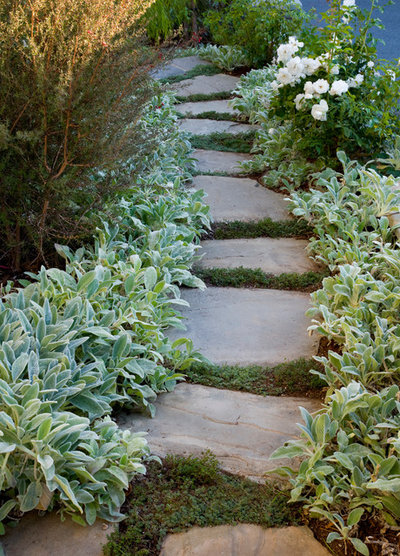
Stout Design-Build
Designing for spontaneity is like a cautious person's attempting to "lighten up." It can't be forced, but it can be achieved, little by little. This lush pathway has a perfect balance between the functional
(the generously sized stepping stones make it easy to traverse this walkway) and the beautiful
(the ground covers elevate the path to a lovely experience) — and both elements are essential to its success.
When plants are slightly askew, not rigidly manicured, their informality is appealing, as is the case here, with soft clumps of lamb's ears forming the boundaries of the path. Tiny ground covers occupy the crevices and cracks and knit together the hard surfaces with striking results.
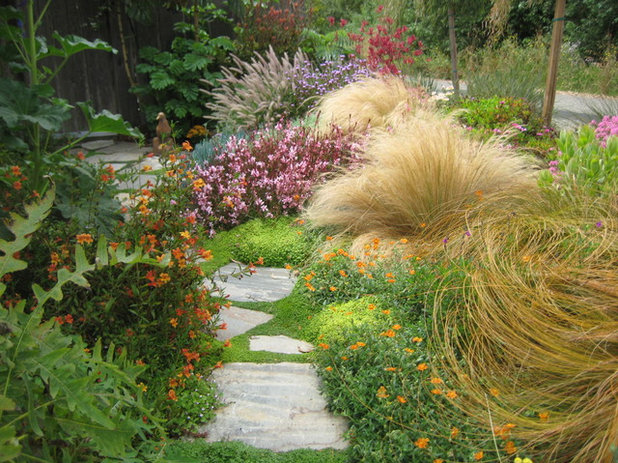
Gardens by Gabriel, Inc.
A joyous celebration of plants — with their unique traits, forms, habits and blooms — adds up to a garden with a charismatic and engaging attitude. Colors may clash for surprisingly successful pairings, like orange and pink or gold and purple. This garden challenges conventions. It is a single composition created by the pairing of exotic and native plants.
Carex, Stipa and
Pennisetum — carefree ornamental grasses — intermingle with
Gaura and kangaroo paw in what some may call "controlled chaos." I call it irresistible.
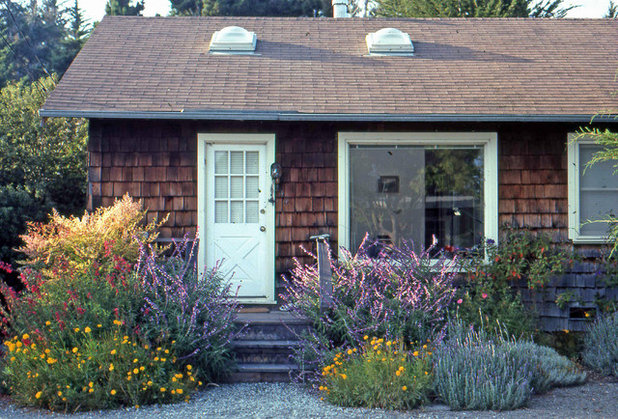
Elemental Design Group
Deliberate design elements blend happily with accidental ones in a spontaneous garden. The garden owner gives equal status to both the ordinary and the rare: edibles, for instance, are tucked among precious ornamentals; glossy finishes appear in contrast to rustic materials; lavish plantings occupy humble vessels.
A spontanteous garden gives the impression that its owners skipped away from chores or tasks for an impromptu picnic midway through.
I love this garden for some of these characteristics. Low-maintenance gravel has so many pluses, including the fact that annuals and perennials are encouraged to self-sow in it. The billowy plantings here are companionable with the bungalow's natural shingle exterior. The look is uncontrived and effortless. This is a place you want to visit (and possibly move into).
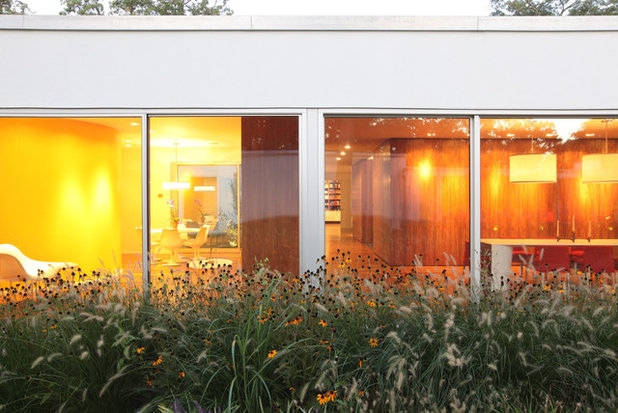
SchappacherWhite Architecture D.P.C.
A spontaneous garden isn't always casual or rustic in style. The contemporary architecture shown here, with clean lines and an unembellished white facade, gets a jolt of spontaneity in the exuberant border growing in front of the windows. Two plants — a black-eyed Susan (
Rudbeckia sp) and an ornamental fountain grass — are massed together to create a dreamy, textured tapestry.
If we yield to spontaneity in our gardens, we begin to see with new eyes and listen for other sensory cues that resonate with our spirits. The act of gardening and the pursuit of beauty are interdependent. When the garden is seasoned with a dash of spontaneity and playfulness, the result is an unforgettable destination like this one.
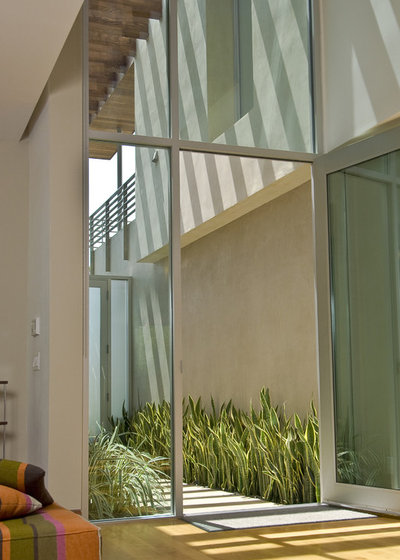
Michael Lee Architects
When plants show up in surprising places, you have achieved the idea of spontaneity. Lifeless areas in and around our homes cry out for verdant touches. To some, it may be incongruous to line an interior hallway with a border of
Sansevieria plants, but these graphic plants from the tropics go a long way to warm the stark architecture with a playful wink. If you don't have a garden outside, create one indoors.
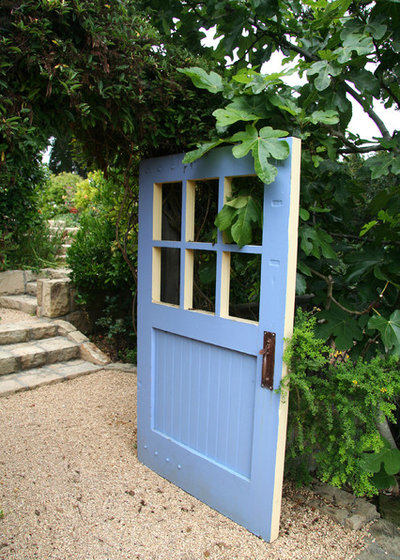
Donna Lynn - Landscape Designer
Infuse your garden with a lively, free-spirited attitude. I love this "doorway" that connects a garden to its adjacent orchard. Visitors are lured by the idea of exploration — to discover what's hidden just beyond this periwinkle-blue garden door. The journey promises a touch of intrigue, a memorable experience from beginning to end. Use imagination to change the predictable into the poetic. When a garden displays a spontaneous mood, whether by intent or by happenstance, when artistic freedom is encouraged and design rules are broken, we are drawn to the appealing results.
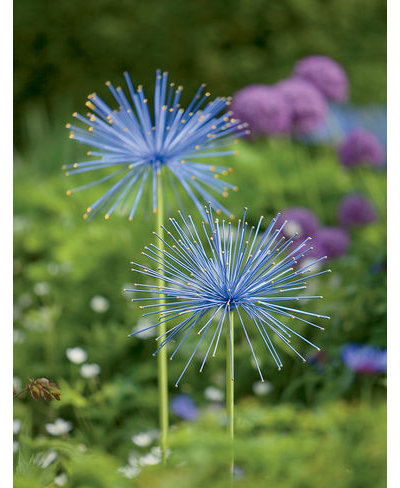
Gardener's Supply Company
Everlasting Alliums - $36.95
When design elements coexist with upbeat plantings or riotous blooms, their impact is indelible. Frivolous accents in the garden are guaranteed to cause the viewer to stop and notice their presence. An unconventional placement of found objects never fails to surprise, especially if it reflects the designer's personal collections and interests (or favorite color palette).
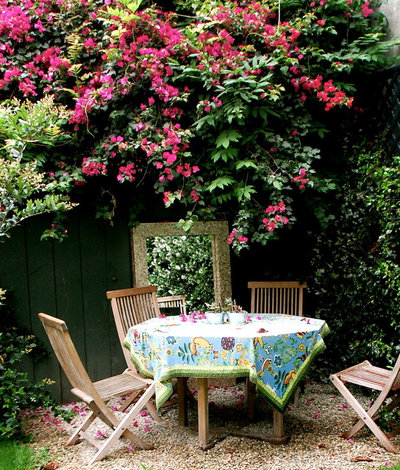
Lisa Borgnes Giramonti
The desire to discover the hidden secret or the unexpected treasure is indeed the allure for many garden lovers. Here, tucked beneath a prolific bougainvillea, a mosaic-framed mirror is tilted against the dark fence. It serves both as living artwork, reflecting the greenery elsewhere in the garden, and as a faux window for the outdoor dining room. The intrigue makes this endearing space even more spontaneously beautiful.
Previous: 10 Elements of an Abundant Garden
Next: Views and Vistas add Abundance to the Landscape





